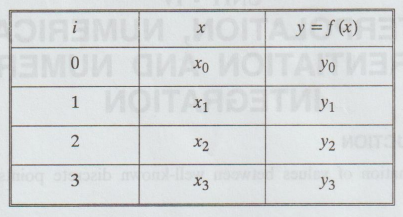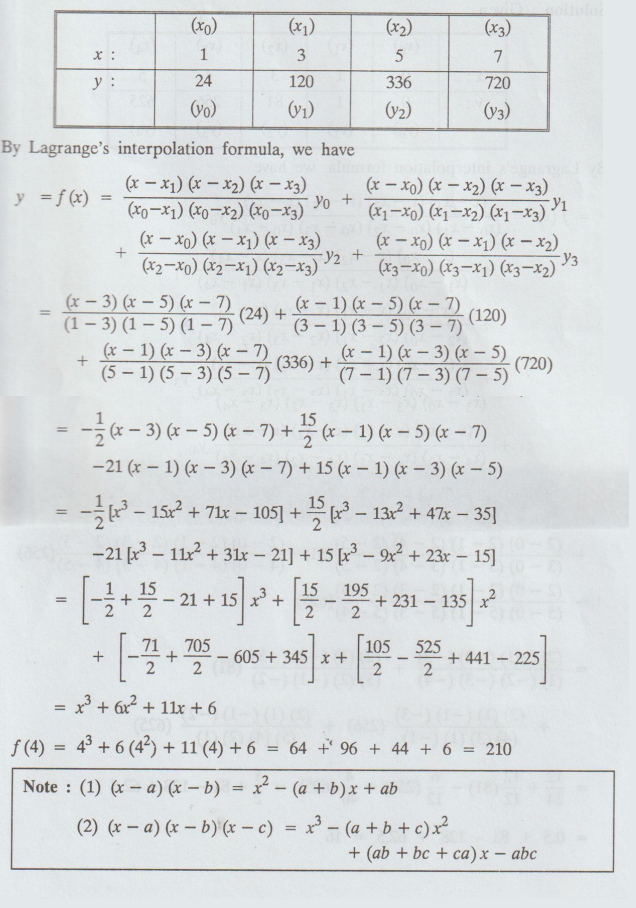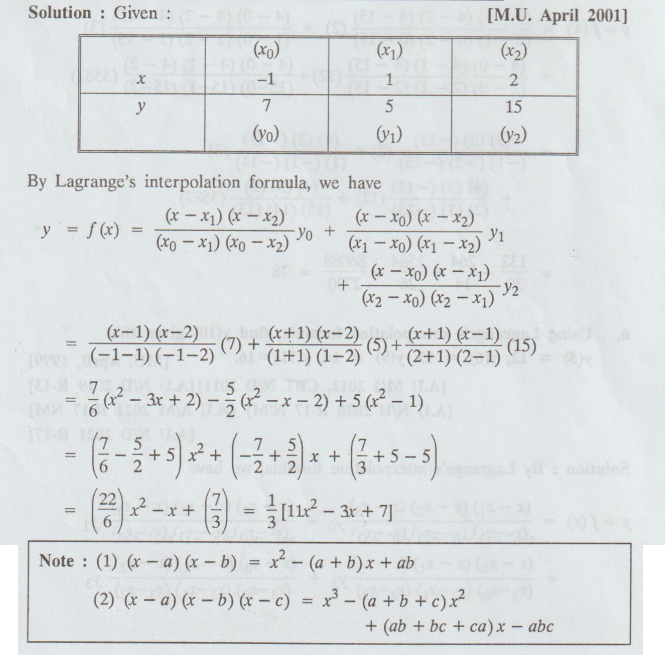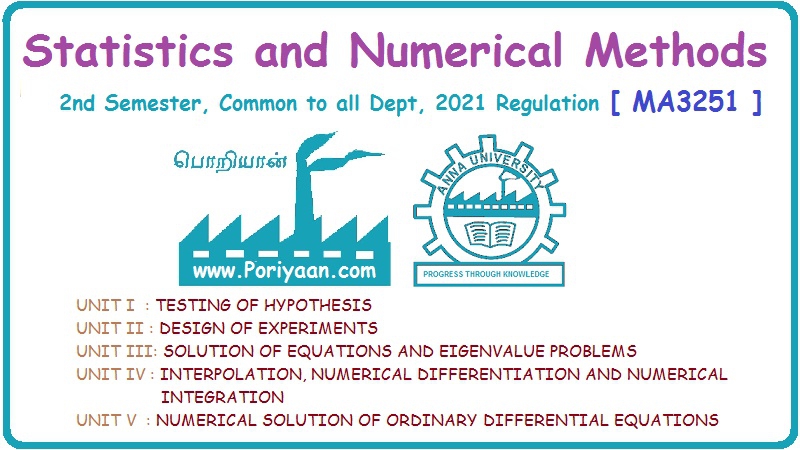Statistics and Numerical Methods: Unit IV: Interpolation, numerical differentiation and numerical integration
Lagrange's Interpolation
Solved Example Problems
The Lagrangian polynomial method is a very straight forward approach. The method perhaps is the simplest way to exhibit the existence of a polynomial for interpolation with uneven spaced data.
LAGRANGE'S INTERPOLATION
The
Lagrangian polynomial method is a very straight forward approach. The method
perhaps is the simplest way to exhibit the existence of a polynomial for
interpolation with uneven spaced data. Data, where the x-values are not
equi-spaced often occur as the result of experimental observations or when
historical datas are examined.
Suppose,
we have a table of data with four pairs of x and f (x) values. With x; indexed
by variable 'i':

Here,
we do not assume uniform spacing between the x-values, nor we need the x-values
arranged in a particular order. All the x-values must be distinct, however,
through these four data pairs, we can pass a cubic. The Lagrangian form for
this is

The
arithmetic in this method is tedious, although hand calculators are convenient
for this type of computation. Writing a computer program that implements the
method is not hard to do. Both MATLAB and Mathematica can get interpolating
polynomials of any degree. An interpolating polynomial, although passing
through the points used in its construction does not, in general, give exactly
correct values when used for interpolation. The reason is that the underlying
relationship is often not a polynomial of the same degree. We are interested in
the error of interpolation.

The
expression for error is interesting but is not always extremely useful. We can
conclude, however, that if the function is "smooth", a low-degree
polynomial should work satisfactory. On the otherhand, a "rough"
function can be expressed to have larger errors, when interpolated.

1. Find the polynomial f (x) by using Lagrange's formula and hence find f(3) for

Solution
:


2.
Using Lagrange's interpolation, calculate the profit in the year 2000 from the
following data:
[A.U.
April/May 2004, A.U M/J 2012]

Solution:
Given:

3.
Find the third degree polynomial f(x) satisfying the following data:

Solution
:

4.
Using Lagrange interpolation find y (2) from the following data.

Solution:
Given:

5.
Using Lagrange's interpolation formula, find f(4) given that f(0) 2, f(1) = 3,
f(2) = 12, f(15) = 3587
Solution:
Given

6.
Using Lagrange's interpolation formula, find y(10) given that y(5) = 12, y(6) = 13, y(9) = 14, y(11) = 16.
[MU.April,
1999]
[A.U
M/J 2012, CBT N/D 2011] [A.U N/D 2019 R-13] [A.U N/D 2020 R-17 N/M] [A.U A/M
2021 R-17 NM] [A.U N/D 2021 R-17]
Solution:

7.
Using Lagrange’s fprmula, fit a polynomial to the data

Solution : Given

8.
The mode of a certain frequency curve y = f(x) is very nearer to x = 9 and the
values of the frequency density f(x) for x = 8.9, 9, 9.3 are 0.30, 0.35 and
0.25 respectively. Calculate the approximate value of the mode.
Solution:
Given:

9.
Using Lagrange's formula, prove y1 = y3 - 0.3 (y5y-3)
+ 0.2 (y-3 + y-5) nearly.
Solution:
Here,
y-5, y-3, y3, y5 are the terms in
the given expression. So, we have the table

10.
Find the parabola is of the form y = ax2 + bx + c passing through
the points (0, 0), (1, 1) and (2, 20).
Solution:
By Lagrange's interpolation formula, we have

11.
Find the Lagrangian interpolating polynomial for the following data:

12.
Use Lagrange's method to find log10 656, given that log10
654 = 2.8156, log10 658 = 2.8182, log10 659 = 2.8189 and
log10 661 = 2.8202
Solution:
Given: [A.U N/D 2012]

13.
Use Lagrange's formula to find the value of y at x = 6 from the following data:
[A.U. N/D 2013]

14.
Given the values

Find
f(27) by using Lagrange's interpolation formula.
[A.U.
N/D 2006] [A.U. M/J 2006] [A.U A/M 2019 R-17]
Solution:
Given:

15.
Find the expression of f(x) using Lagrange's formula for the following data :

Statistics and Numerical Methods: Unit IV: Interpolation, numerical differentiation and numerical integration : Tag: : Solved Example Problems - Lagrange's Interpolation
Related Topics
Related Subjects
Statistics and Numerical Methods
MA3251 2nd Semester 2021 Regulation M2 Engineering Mathematics 2 | 2nd Semester Common to all Dept 2021 Regulation
